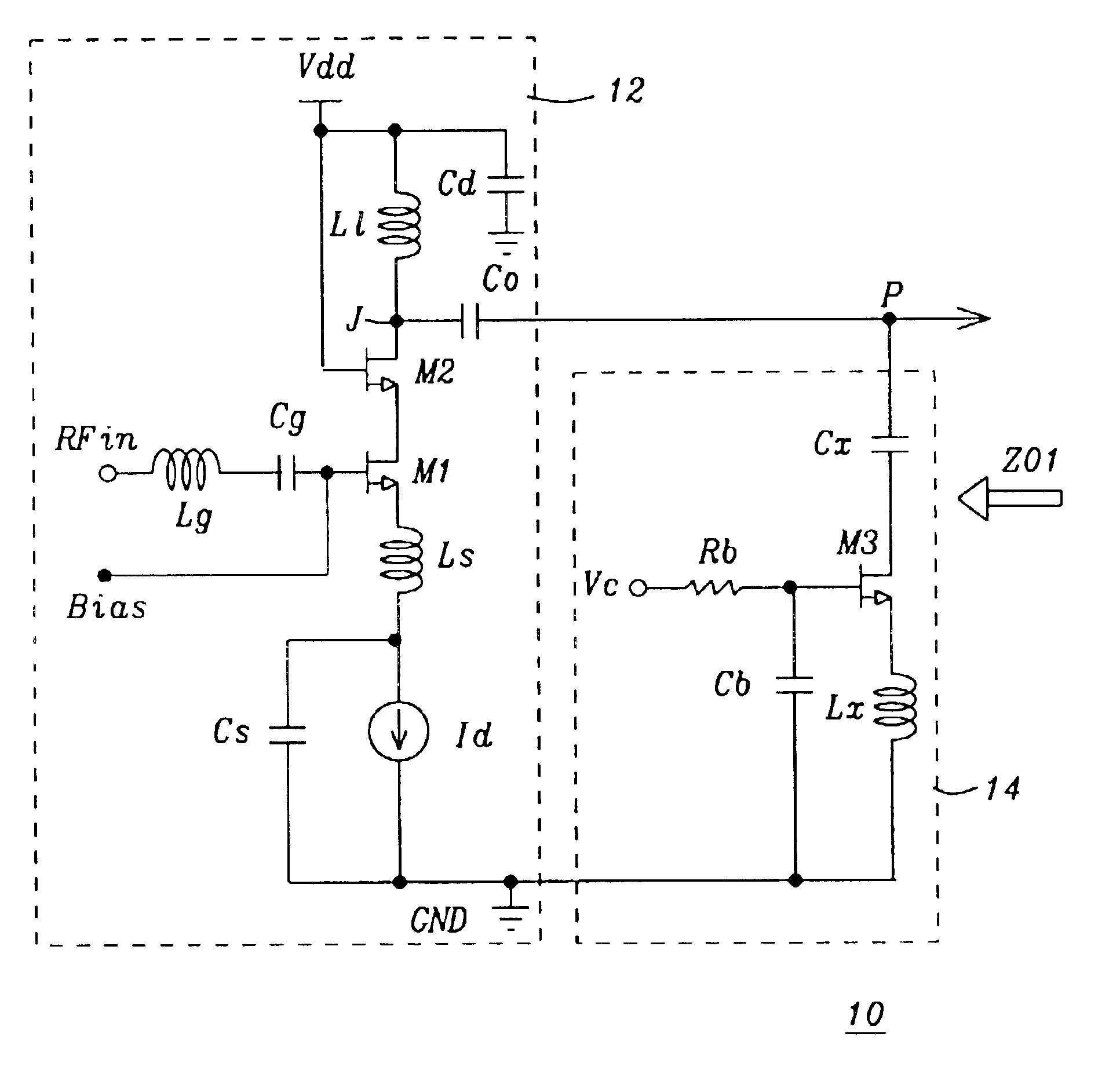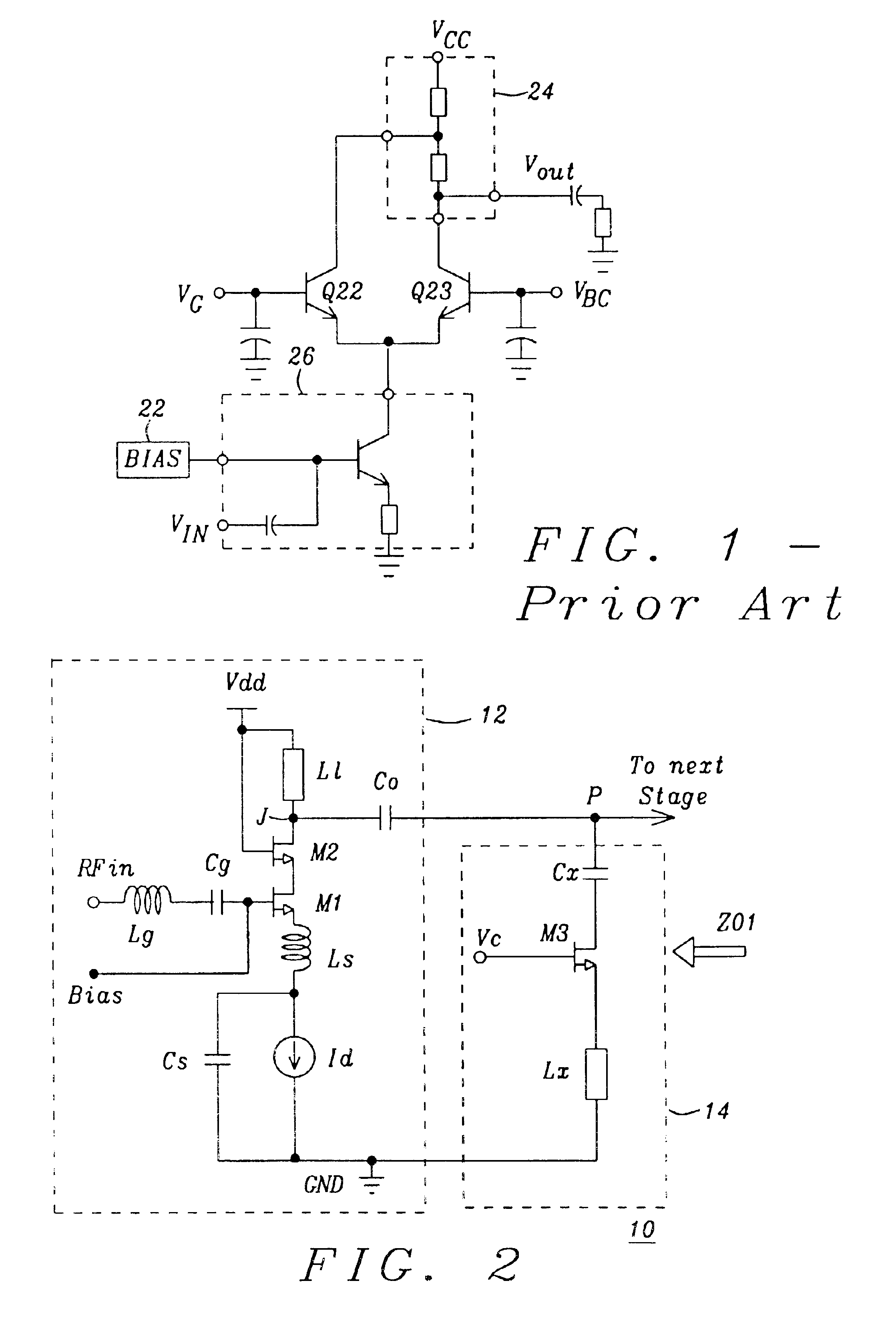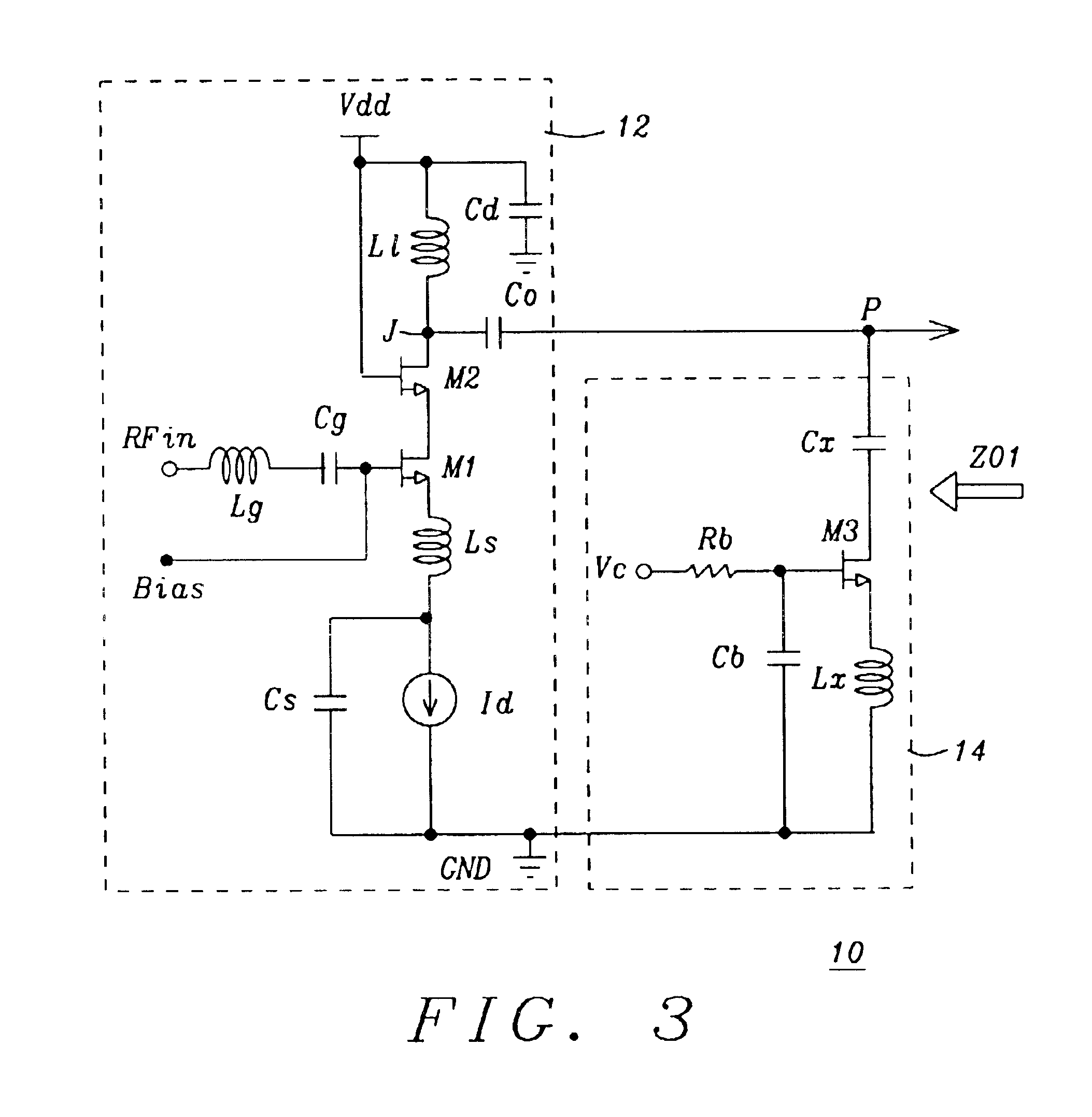Variable gain low noise amplifier
- Summary
- Abstract
- Description
- Claims
- Application Information
AI Technical Summary
Problems solved by technology
Method used
Image
Examples
Embodiment Construction
Embomdiment
FIG. 3 shows a Variable Gain LNA 10 in one of its simple forms. FIG. 3 is similar to FIG. 2, except that a) a decoupling capacitor C.sub.D is coupled between Vdd and ground, b) loads L.sub.L and Lx are shown as inductors, c) resistive means Rb is coupled between the gate of M3 and Vc, and c) capacitor Cb is coupled between the gate of M3 and ground.
The LNA is matched to the input impedance through Lg, Ls and the gate-to-source capacitance Cgs (not shown) of M1 for the desired frequency band of operation. Capacitor Cs is used to provide RF ground to Ls. Transistors M1 (Common Source) and M2 (Common Gate) form the cascode amplifier. Cd is the decoupling capacitor. Inductive Load L.sub.L is used rather than a resistive load as the inductive load offers lower NF and better IIP3. The overlap transistor gate-to-drain capacitance Cgd (not shown) of M2 and the load inductance L.sub.L determine the output impedance Z.sub.O1. Usually the input impedance of the following stage is op...
PUM
 Login to View More
Login to View More Abstract
Description
Claims
Application Information
 Login to View More
Login to View More - R&D
- Intellectual Property
- Life Sciences
- Materials
- Tech Scout
- Unparalleled Data Quality
- Higher Quality Content
- 60% Fewer Hallucinations
Browse by: Latest US Patents, China's latest patents, Technical Efficacy Thesaurus, Application Domain, Technology Topic, Popular Technical Reports.
© 2025 PatSnap. All rights reserved.Legal|Privacy policy|Modern Slavery Act Transparency Statement|Sitemap|About US| Contact US: help@patsnap.com



